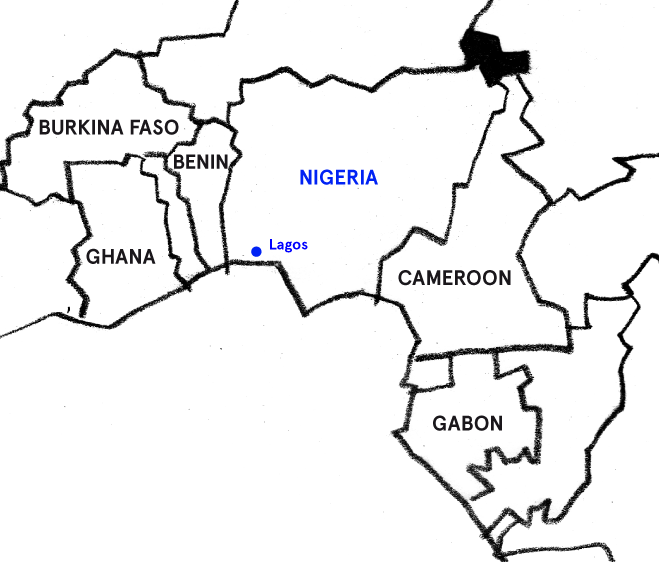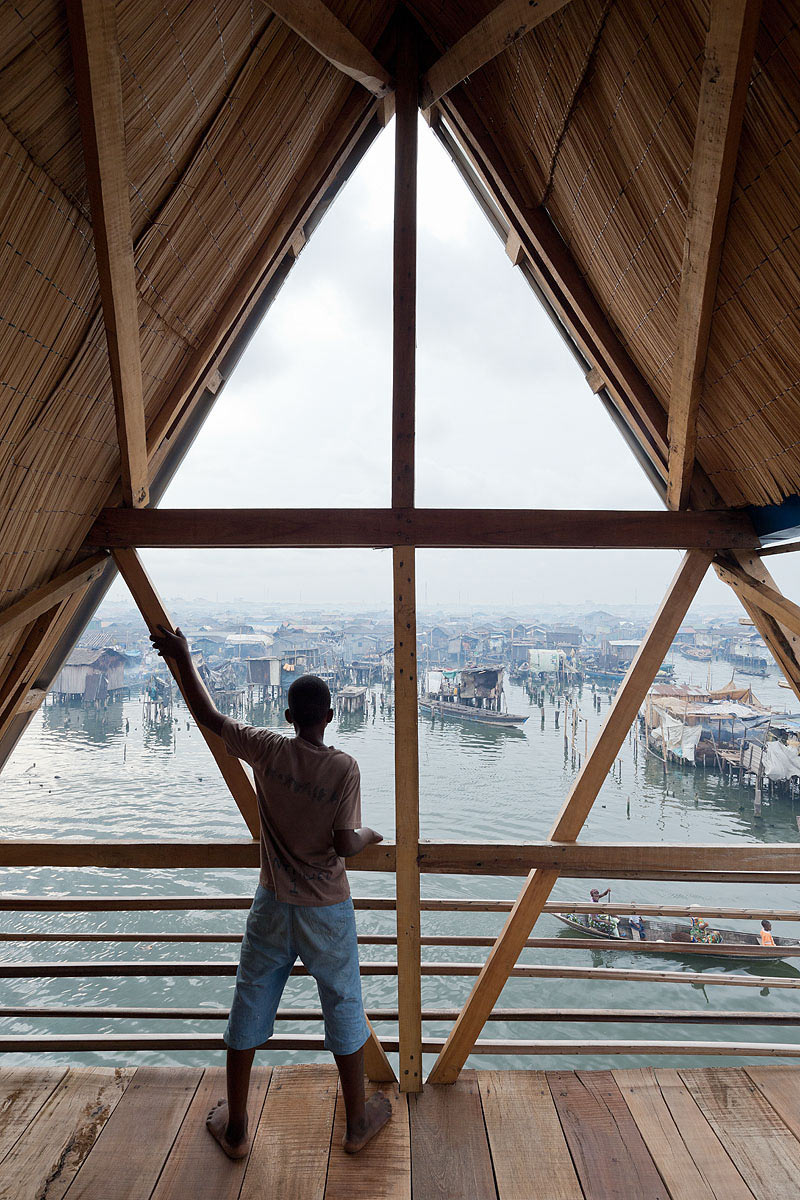-

Makoko
Floating School
A new school prototype for a village prone to flooding near Lagos, Nigeria
Architect: NLÉ
The largest public space in the village, the Makoko Floating School rides the waves, protecting it from annual floods. (All photos © Iwan Baan)
-
PROJECT: Makoko Floating School
LOCATION: Makoko, Lagos, Nigeria
ARCHITECTS: NLÉ and Dykstra Naval Architects, Amsterdam, The Netherlands
DESIGN TEAM: Kunlé Adeyemi, Lisa Anderson, Thijs Bouman, Leslie Ebony, Marije Nederveen, Segun Omodele, Adekunle Olusola, Chryso Onisiforou, Martin Oreoluwa, Berend Strijland, Monica Velasco
CLIENT/BENEFICIARY: Makoko / Iwaya Waterfront CommunityCONSTRUCTION: 2012 - 2013
NLÉ is led by the architect, designer, and urbanist Kunlé Adeyemi, who has worked closely with Rem Koolhaas at OMA on numerous projects, including the Lagos Masterplan. Born and raised in Nigeria, Adeyemi studied architecture at the University of Lagos, where he began his early practice before joining the Office for Metropolitan Architecture (OMA) in 2002. His work focuses on city development research and urban interventions.
Makoko is an overcrowded former fishing village with 150,000 residents that spills from a marshy shore out into a brackish lagoon. It is one of many informal settlements in the largest and most rapidly growing metropolis of sub-Saharan Africa.
Many of Makoko’s wooden houses are built on stilts above the water. But every year during the rainy season, many of the buildings on land, including the school, are submerged. With the Makoko Floating School, NLÉ has created an extension to the existing school that is also a prototype for other settlements with similar conditions as well as an ambitious scheme: the Lagos Water Communities Project.
The three-level wooden construction with its triangular frame structure floats on a pontoon made of 256 recycled plastic barrels. At around 100 square metres, the lower storey offers the largest public space in Makoko. The two upper storeys house four classrooms and two workshops for up to 100 students.
A low centre of gravity and the triangular shape keeps the floating platform quite stable even with rapid and dramatic shifts of weight. The expansive roof surfaces are equipped with photovoltaic panels for electricity, and rainwater is collected in the plastic tanks. Compost toilets in the lower storey are a novelty for the village: until now, all sewage was deposited in the lagoon.


The Makoko School's three stories include workshop, classroom, and play areas.
-
Search
-
FIND PRODUCTS
PRODUCT GROUP
- Building Materials
- Building Panels
- Building technology
- Façade
- Fittings
- Heating, Cooling, Ventilation
- Interior
- Roof
- Sanitary facilities
MANUFACTURER
- 3A Composites
- Alape
- Armstrong
- Caparol
- Eternit
- FSB
- Gira
- Hagemeister
- JUNG
- Kaldewei
- Lamberts
- Leicht
- Solarlux
- Steininger Designers
- Stiebel Eltron
- Velux
- Warema
- Wilkhahn
-
Follow Us
Tumblr
New and existing Tumblr users can connect with uncube and share our visual diary.
»I hate vacations. If you can build buildings, why sit on the beach?«
Philip Johnson
Keyboard Shortcuts
- Supermenu
- Skip Articles
- Turn Pages
- Contents


